Meditation Upon Death
2018
78” x 68”
Brushstrokes: 5,796
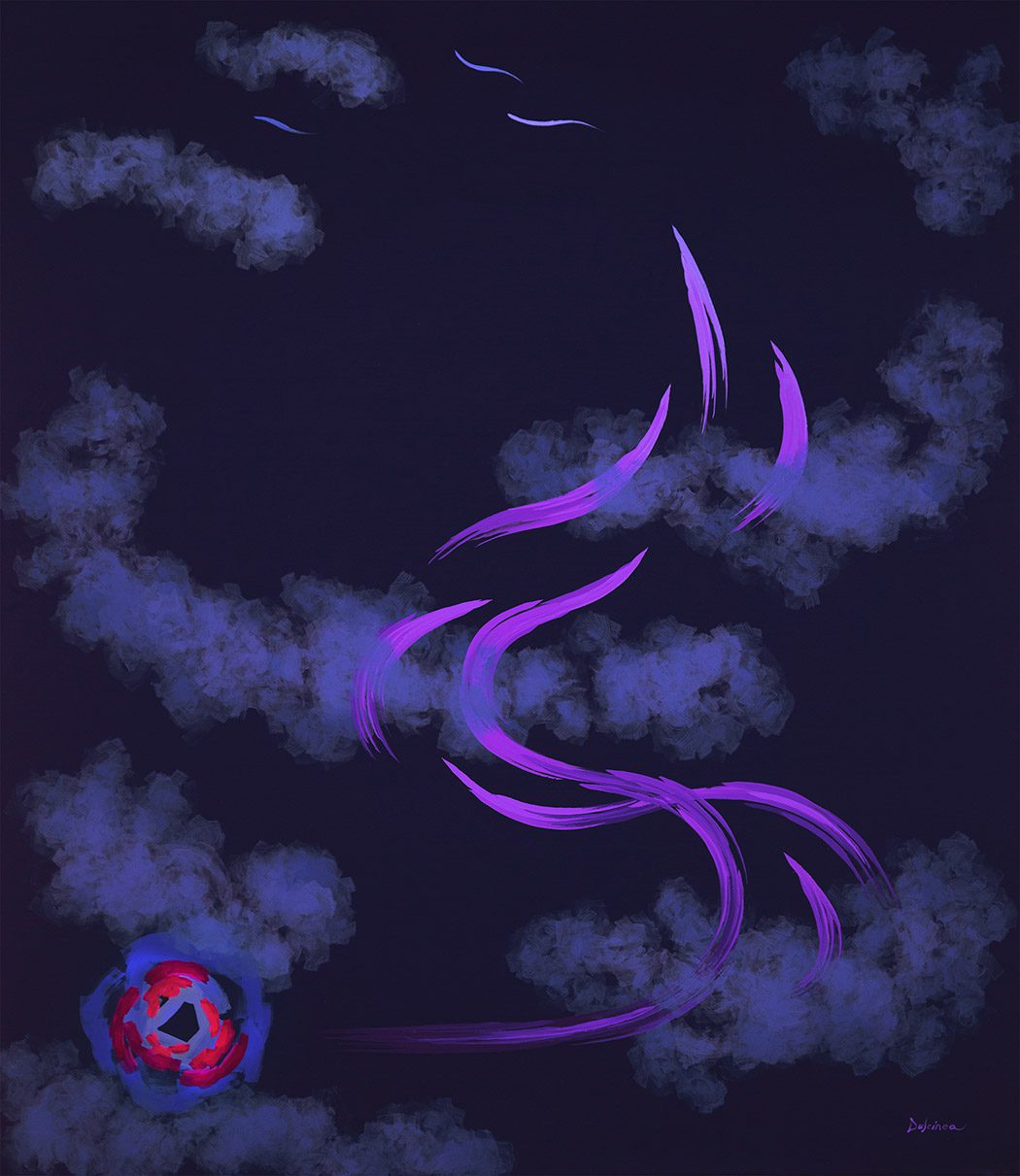
View in Gallery
A conceptual, artistic, and technical challenge, Meditation Upon Death takes the viewer on a three-act journey of emotion and spirit through the realms of life and death. Mysterious feelings evoked by the composition bring the viewer into a shamanic movement throughout the journey. This painting moved from sketchbook and watercolor into computer coding to shape the flowing curves and the contemplative, moving brushstrokes and colors of the final work.
Experience the ephemerality of life, and the questions that follow.
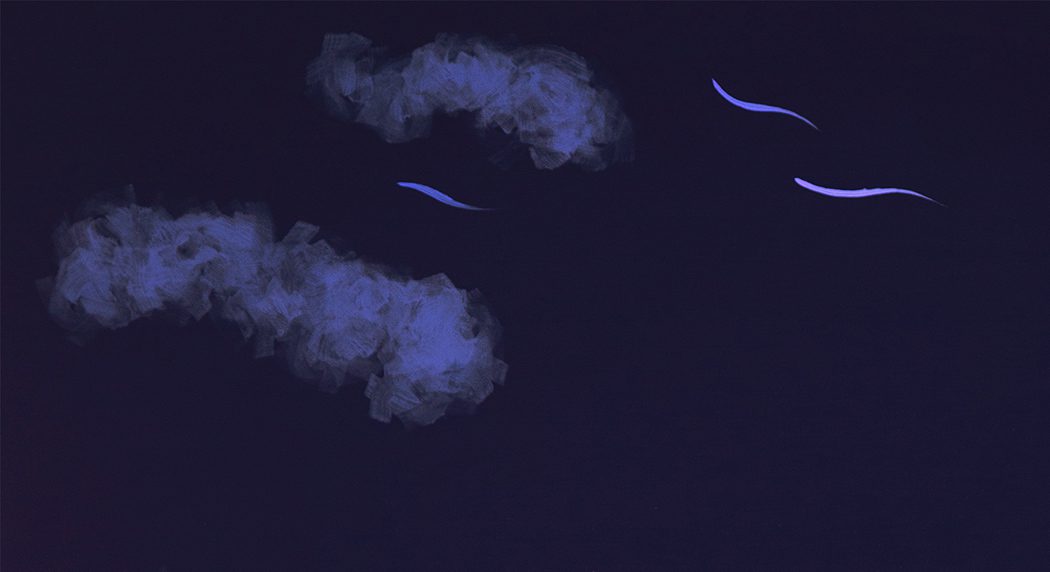
A Story in Three Acts
A piece with incredible significance for its creator, it was not until Paul considered a concept from traditional narrative storytelling that the painting’s design and composition started to take on greater visual clarity in his mind. Paul decided upon a three-act structure within the painting, progressing from the tragic moment of death, to the spirit wandering through realms of the afterlife, and finally to an unresolved ending open to interpretation. The title became Meditation Upon Death, and the completion of the painting became the greatest challenge Paul and Dulcinea ever undertook.
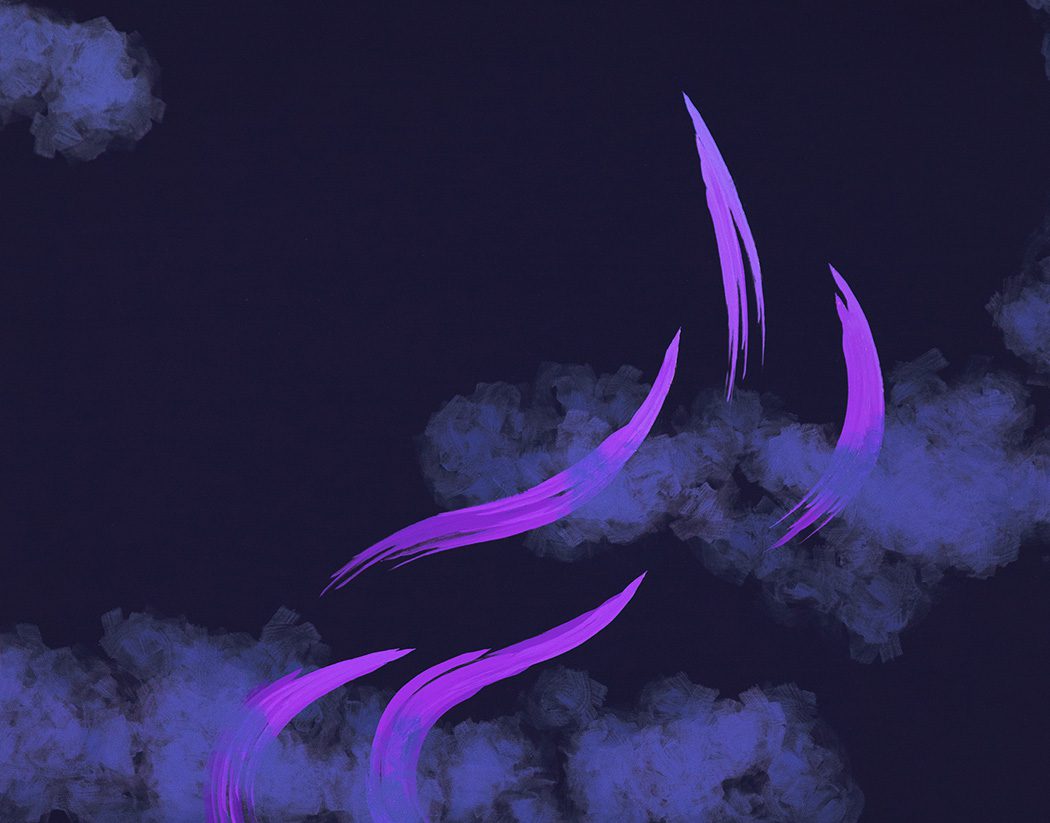
Notes and Development
Dozens of hand-drawn sketches were made by Paul in artists’ notebooks, sometimes with ink and watercolor. Over the course of time, these would be revised, ever evolving along with the painting’s concept. How does one capture with abstract brushstrokes the tragic moment of death? What about the spirit wandering through the realms beyond life? How can a cathartic Act III be constructed to create a cohesive and impactful whole? To answer these questions, pages upon pages of notes were filled, accompanied by tons of additional drawings and sketches.
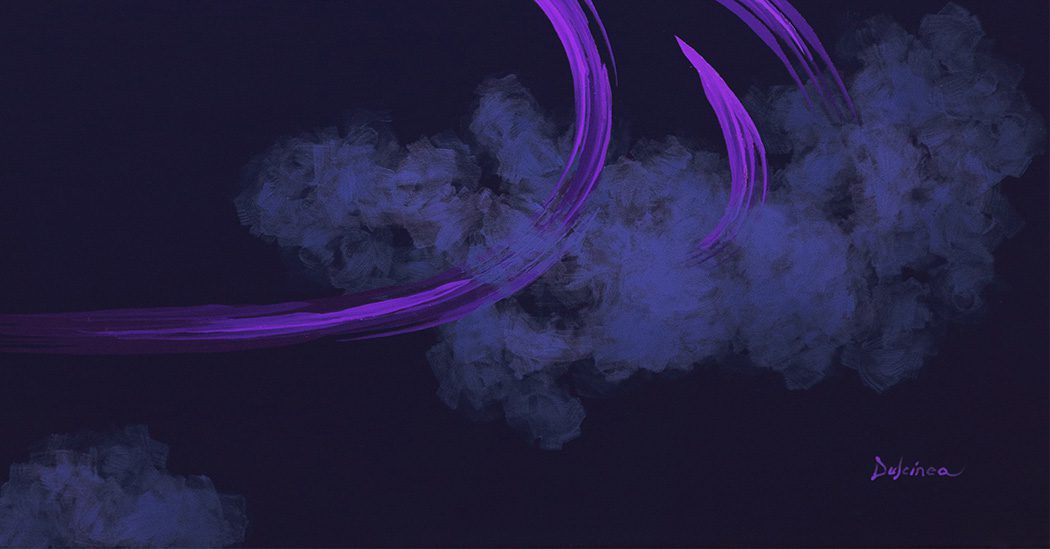
AI and Robotic Innovation
A multi-year developmental process commenced. The journey to the completion of Paul’s concept carried with it many questions. Coding started for the initial curves, to develop a feel for the design’s visual movement. Artificial intelligence and generative systems created the layers of ethereal clouds and spline curves of the spirit’s ascent. Tentative paint colors were mixed, and portions of the initial designs were painted on sections of canvas. But Paul was uncertain, and questions remained, such as, “What about the clouds?” and, “Who knew there were so many different types of black?” The constant refinement of the work and concept continued.
A new robotic code implemented for Dulcinea’s wrist created long, graceful brushstrokes and layered, feathered clouds, deep and rich, like the four layers of sfumato glaze that enrich the surface of the artwork
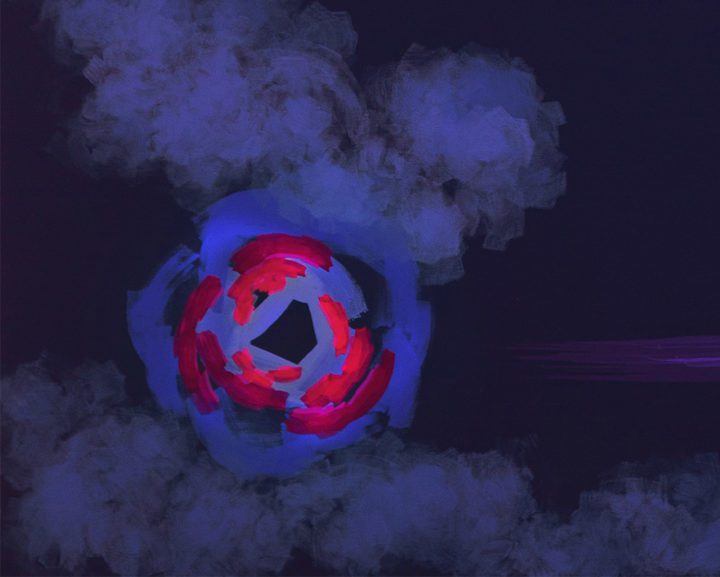
View in Gallery
Technical
It was not until Paul decided upon an idea taken from story telling that the painting’s design and composition started to have more visual clarity in his mind. He decided upon a three-act movement in the painting, progressing from the tragic moment of death, through the spirit wandering through realms of the afterlife, to an unresolved, unsettling ending. The title became “Meditation Upon Death.” It was the most challenging painting conceptually, technically and artistically that Paul and Dulcinea ever attempted.
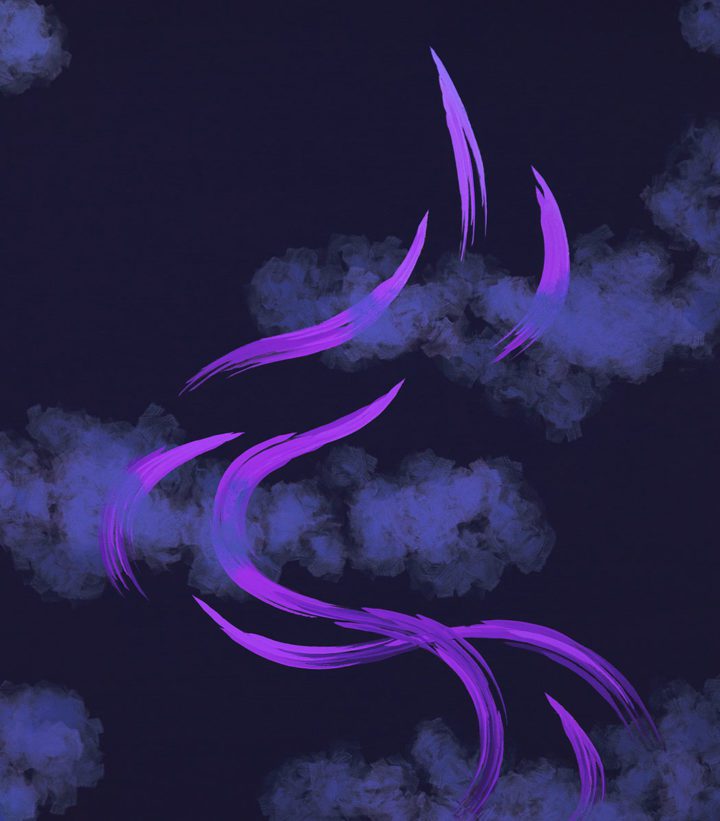
Dedication and Iteration
A shower stall, half-filled with dozens of tightly rolled canvases used as tests and attempts for Meditation, will attest to the dedication, perseverance, and developmental complexity involved in reaching a final product. Over the course of weeks and months — and then years — each part of the painting (each of the three acts) gradually emerged. In time, these separate pieces would all be assembled and painted together on a single large canvas. Once again, more critique, revision, and developmental iteration were required, until all the components of the work coalesced and ultimately evolved into the final painting.
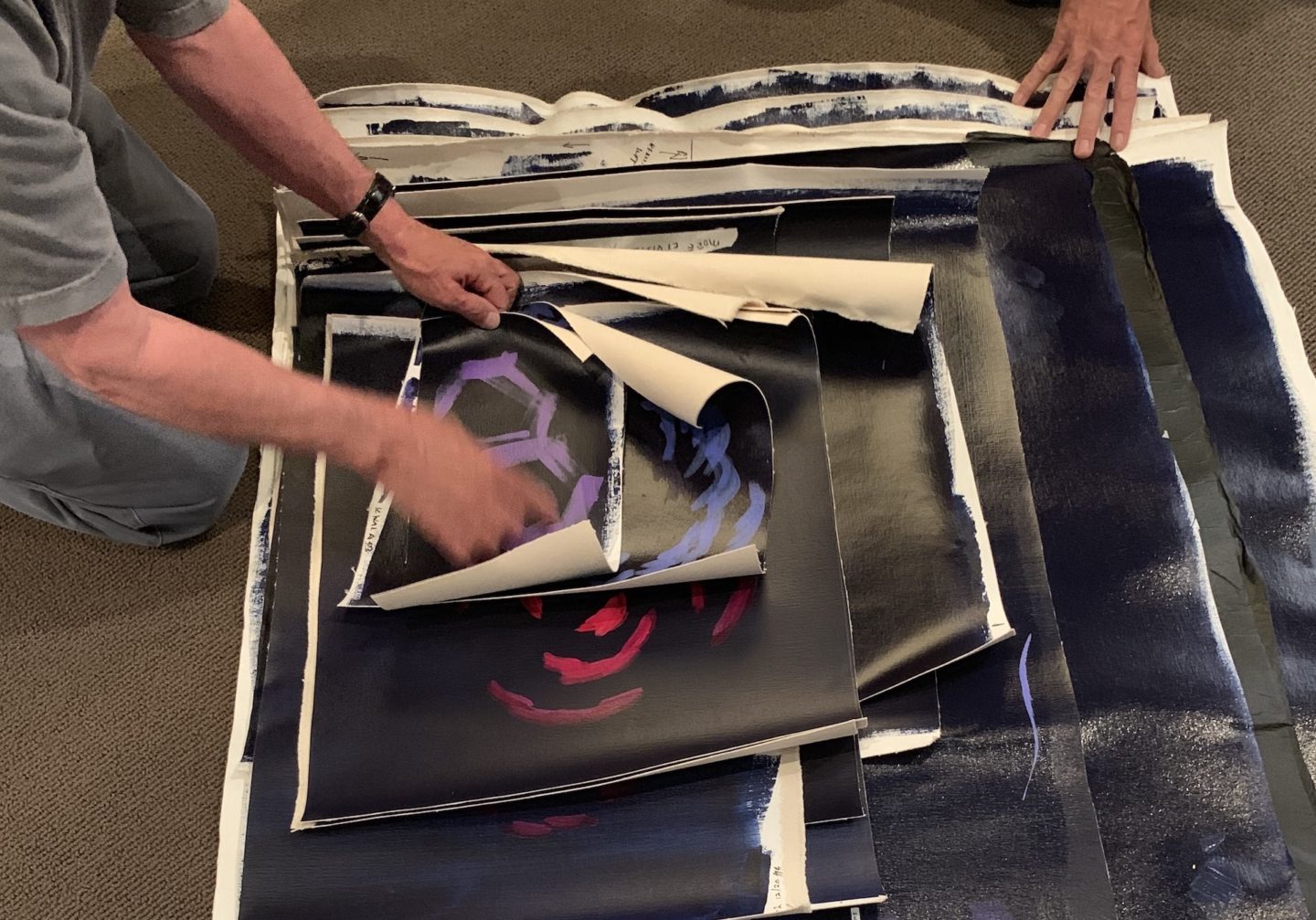
A Stirring Final Piece
Typically, an artist is never satisfied with a painting. There’s always something they would want to change or touch up, regardless of a work’s objective quality. In the case of Meditation, at the end there was only quiet contentment.
The finished artwork, dedicated to the memory of Linda, serves as a breathtaking mental and spiritual journey, confronting us with the ephemeral nature of life, and the questions that arise from the dreamlike, clouded reaches of the other side.